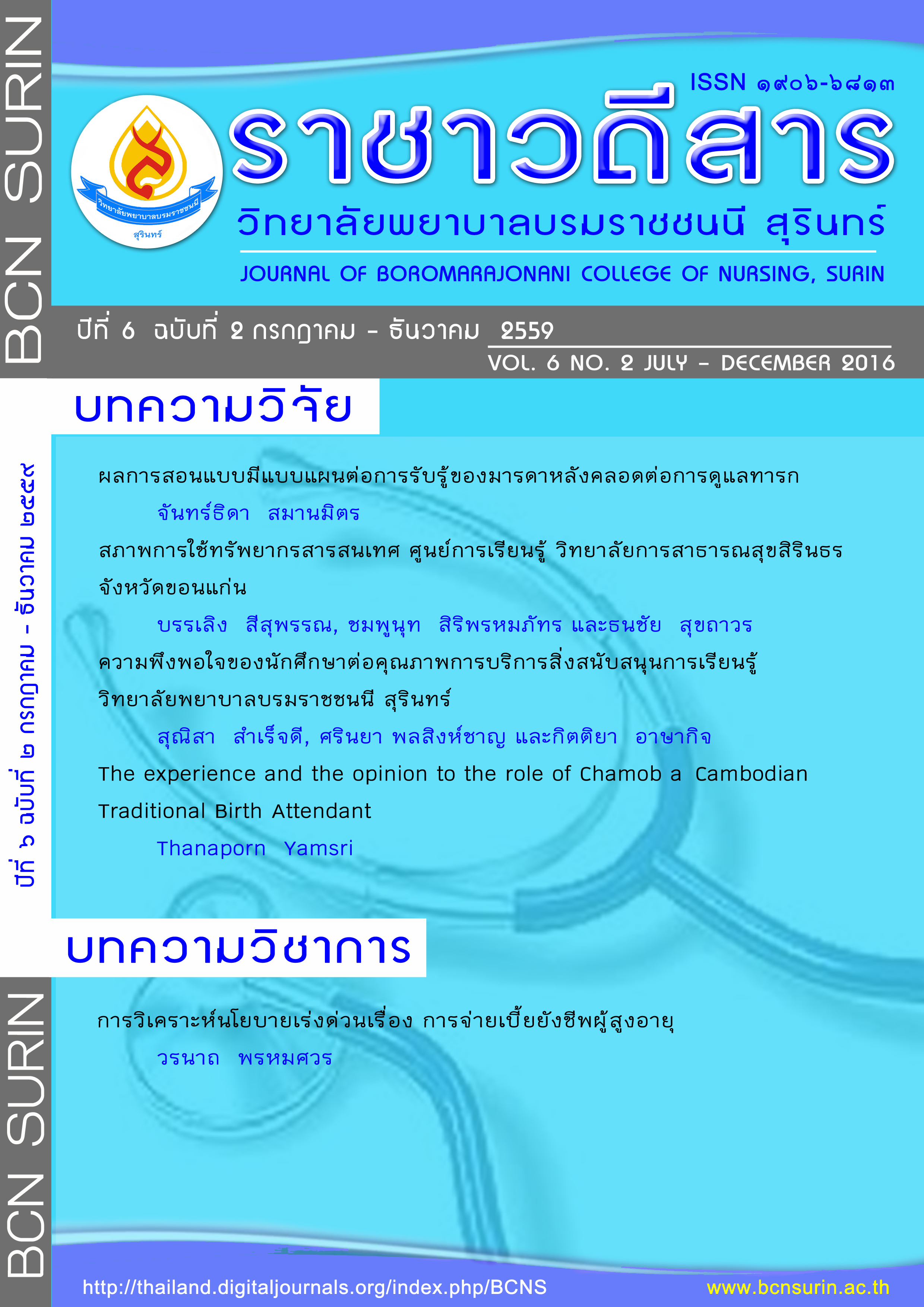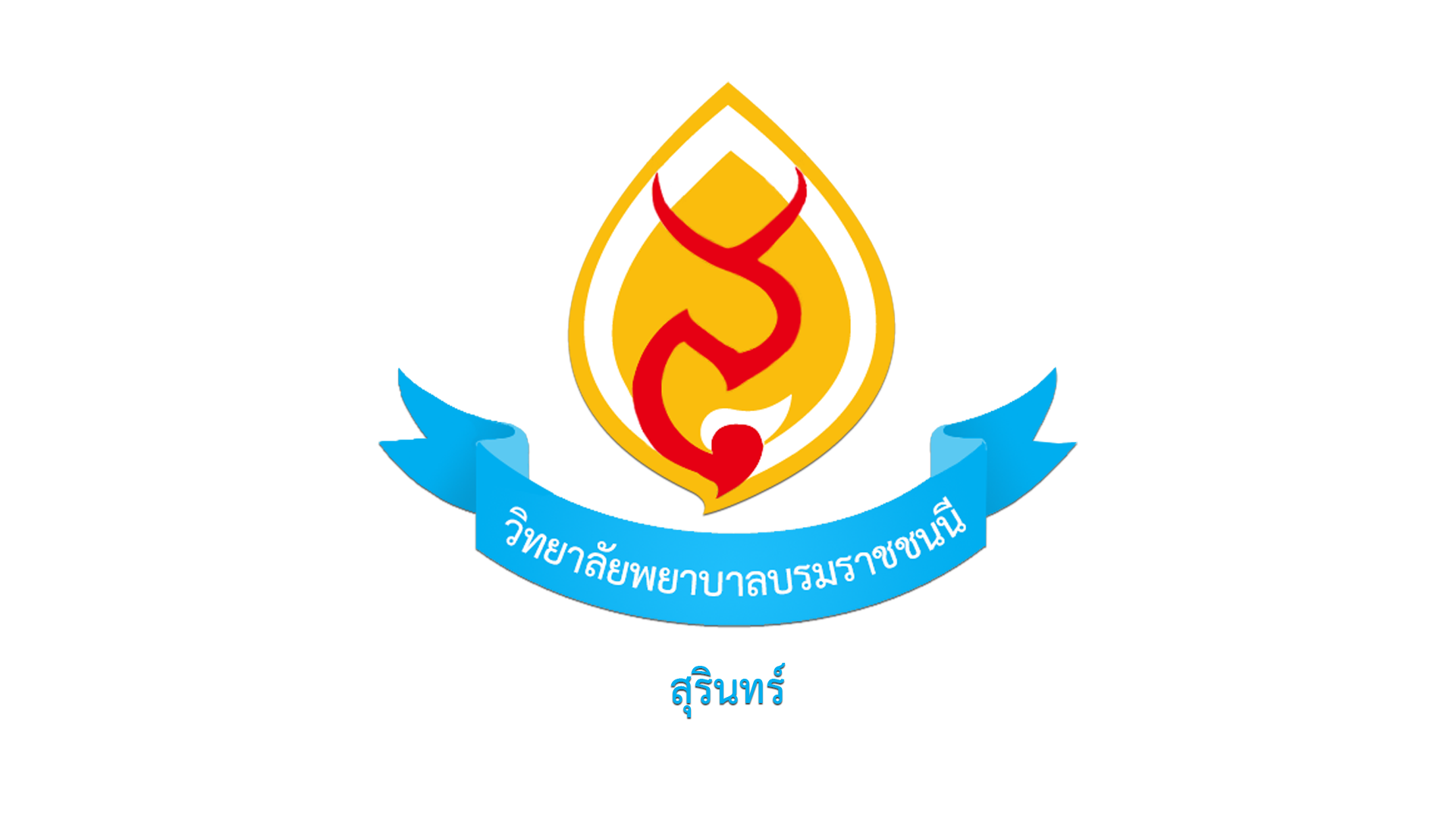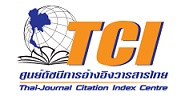The experience and the opinion to the role of Chamob a Cambodian Traditional Birth Attendant
คำสำคัญ:
Cambodian Traditional Birth Attendance, Labor and deliveryบทคัดย่อ
Due to the lack of medical devices, labor and delivery in Cambodia is a risky experience for both mother and newborn. The word “Chalong Taunlay” shows the difficulty of this process by comparing it to how people traveling through the ocean. Chamob or a Traditional Birth Attendance (TBA) is a person who assists the labor and delivery in the community and has been doing so for centuries.
This Phenomenology qualitative research sought to study the experience and the attitudes toward on the roles of Cambodian TBA. There were 6 Chamob women lived in Sam Rong and Cong Kul district in Udonmeechai Province, Cambodia volunteer to participate. Data were collected by in-depth interviewed and were transcribed and analyzed by Colaizzi's method.
The experiences of Chamob were divided into 3 stages, which included before deliver period, delivery period, and postpartum period. Before delivery was assess the shape of the womb, baby quickening, and general appearance of pregnant women. When gestational age about 7 months, Chamob will do a technique called “Pra well” (external version to make fetal head as a presentation). Labor and delivery period was divided into 2 steps. In the first step a ceremony was organized which involves paying respect to the spirit of landlord. In the step 2 called as “Put Ta Se Ma”, Chamob will use 3 colors of tread to surround area of delivery in order to prevent the evil spirits such as Cha rab, Ta mob, Abb and Prikalapleng. For the postpartum period, Chamob will let the mother stay on heat charcoal for 3- 7 days. During this period “Krutanum” will prepare traditional medicine providing for postpartum mother. Other care that Chamob provide to mother are how to self-care during postpartum period such as to eat boil rice with dry fish and salt, avoid “Toas” because this food was allergic, not let any people visit, let only lie down (absolute bed rest). At the end of fire stop, they set a ceremony call “Taleechenkran”, “Sraikrasai”, “Phiteeprakag bon cha mob”. The fee of delivery is about 20,000–30,000 real (about 200 –300Thai Baht) per individual delivery. The Chamob feel proud of their occupation because it provide service to the people and more importantly, the angle want them to be, so no need to ask for money and no lie. They still want to help the pregnant women such as observe the abnormal signs and symptoms, home visit, to give advice and help to refer.
เอกสารอ้างอิง
Aumtanee, Aurawon. (2006).Qualitative Research in Nursing.Bangkok: Chulalongkorn University.(in Thai )
Bertrand, Didier.2005). The therapeutic role of Khmer mediums ( kruboramei )in contemporary Cambodia. Mental Health, Religion and Culture, 8( 4 ), 309-327.
Feliciano, Shelby .(2013 ). The Experience of Traditional Birth Attendants in Cambodia : A Qualitative Study. University of Washington.
Galli, Anne-Sophie. (2014 ). Saving babies 'lives in remote Cambodia. (Online). Retrieved from: http://unicefcambodia.blogspot.com/2014/12/saving-babies-lives-in-remote-cambodia.html
Hoban, Elizabeth. (2002). We're safe and happy already, Traditional birth attendants and safe motherhood in a Cambodian rural commune.(Doctoral degree of Public Health, the university of Melbourne).
Jirawatkol, Siriporn.(2005).Qualitative Research in Nursing (2nd ed. )KhonKan: Siripunopset. ( in Thai )
Mony, Keo. (2016). Cambodianpostpartum Practices. [Online]. Retrieved from: http://ethnomed.org>cultures>Cambodia
National Institute of Statistics, Directorate General or Health Cambodia. (2001). Cambodia Demographic and Health Survey 2000 .Online. Retrieved from: http://dhsprogram.com/pubs/pdf/FR124/FR124.pdf.
Sack, Emma and etc. (2016). Neonatal care in the home in northern rural hondurus:a qualitative study of the role. J PERINAT NEONATAL NURS, 27 (1), 62-71.
White, Patrice Michele. (1996). Crossing the River: A Study of Khmer Women's Beliefsand Practices During Pregnancy, Birth and Postpartum.(Doctoral degree of Public Health, University of California, Los Angeles).
Wisetpollachai,Bussabong. (2013). Porparn Barung Chalong Tonnle: Cambodians wives and their transcultural experiences of pregnancy. Journal of Social andAnthropology science,32 (2), 40-60.( in Thai )
Yanagisawa, Satoko, Oum, Sophal, Wakai, and Susumu. (2005). Determinants of skilled birth attendance in rural Cambodia. Tropical Medicine and International Health, 11(2), 238-249.
YWAM Cambodia.(2016). Traditional Birth Attendant (TBA) Program.(Online) Retrieved from: http://ywamcambodia.com/birth-attendants
ดาวน์โหลด
เผยแพร่แล้ว
รูปแบบการอ้างอิง
ฉบับ
ประเภทบทความ
สัญญาอนุญาต
เนื้อหาและข้อมูลในบทความที่ตีพิมพ์ในราชาวดีสาร วิทยาลัยพยาบาลบรมราชชนนี สุรินทร์ ถือเป็นข้อคิดเห็นและความรับผิดชอบของผู้เขียนบทความโดยตรง ซึ่งกองบรรณาธิการวารสารไม่จำเป็นต้องเห็นด้วย หรือร่วมรับผิดชอบใดๆ
บทความ ข้อมูล เนื้อหา รูปภาพ ฯลฯ ที่ได้รับการตีพิมพ์ในราชาวดีสาร วิทยาลัยพยาบาลบรมราชชนนี สุรินทร์ หากบุคคลหรือหน่วยงานใดต้องการนำทั้งหมดหรือส่วนหนึ่งส่วนใดไปเผยแพร่หรือกระทำการใดๆ จะต้องได้รับอนุญาตเป็นลายลักษณ์อักษรจากราชาวดีสาร วิทยาลัยพยาบาลบรมราชชนนี สุรินทร์ ก่อนเท่านั้น







